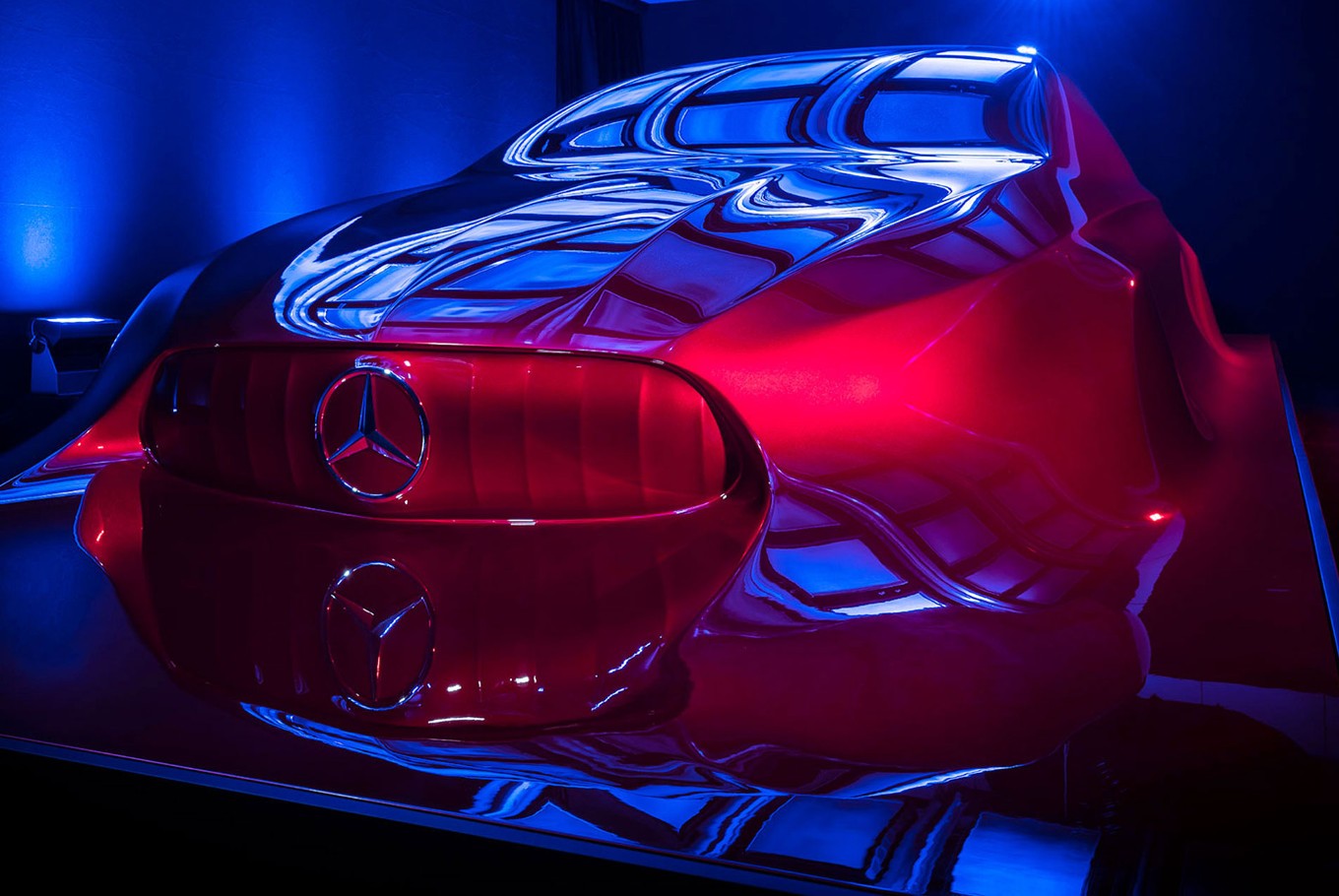Popular Reads
Top Results
Can't find what you're looking for?
View all search resultsPopular Reads
Top Results
Can't find what you're looking for?
View all search resultsMercedes redesign starts new lap with shark-tooth hatchback
Change text size
Gift Premium Articles
to Anyone
T
he last time Mercedes-Benz redesigned its lineup half a decade ago, it left rivals in the dust with flashier, curvier luxury cars that became the world’s best sellers. Now the manufacturer’s trying to keep the buzz going with a shark-tooth grille.
The Daimler AG unit is kicking off an overhaul of its portfolio with the A-Class compact hatchback due in showrooms next year, featuring a “predator face,” fewer creases and rounder contours. After once being derided for its old-man image, Mercedes’s rapid revamp comes just a year after it overtook BMW in global luxury-car sales and aims to avoid the complacency that’s tripped up rivals.
“It’s our job to reinvent ourselves,” Daimler Chief Design Officer Gorden Wagener said this week in Sindelfingen, Germany, where he presented a mock-up of the new A-Class in a blacked-out room. Wagener kept details about the new look close to his chest, leaving it unclear just how different this version will be. But he provided teasers, saying: “It’ll be a very sporty, aggressive car, even as it’s pared back and pure.”
Wagener’s radical design five years ago, which introduced jutting grilles and broader haunches over the rear wheels, transformed Mercedes’s image from stodgy to sporty and gave the carmaker the edge it needed to surpass BMW and Audi to become the world’s biggest luxury-car brand. That cycle concluded with the overhaul of the bread-and-butter E-Class sedan last year, and Wagener’s challenge is to avoid the repetitiveness that once weighed on the brand and is now holding back BMW and Audi.
The new A-Class will achieve a contoured look with light bouncing off curves, creating sporty proportions through shadows rather than metal edges that direct the eye, Wagener said. The typical Mercedes trapezoidal grille shape will change to a more aggressive, evenly elongated form with teeth-like grates.
“There’ll be a predator face at the front,” he said, adding that the new look will ratchet back some of the traits he had previously emphasized, such as creases in the car’s side, which will drop to one from three. “Creases have had their day.”
(Read also: Uber CEO challenged for Trump connection after immigrant ban)
Fast Curve
The first A-Class, introduced two decades ago as an entry-level hatchback for young buyers, fell flat with a boxy design that seemed a better fit for pensioners. Wagener’s facelift in 2012, a low-slung version closer in style to the Volkswagen Golf, has helped win back a new generation.
The current A-Class starts at about 25,000 euros ($27,000) and comes with Apple CarPlay infotainment and autonomous features. It competes with BMW’s 1-Series and Audi’s A3. Mercedes’s lineup overhaul will continue in coming years and the next highlight will probably be the release of a new S-Class earmarked for 2020.
The decision to visibly mix up the A-Class’s look after a complete reinvention only one generation ago contrasts with Mercedes’s top rivals. BMW, once known for agenda-setting sporty and avant-garde styling, has chosen of late to only tweak the design of its flagship models, espousing the philosophy that there’s no need to change a winning formula.
Sales of 2015’s 7-Series have been underwhelming while the 5-Series, available to customers next month, has also failed to rouse enthusiasm. Audi has similarly battled tepid responses to timid revamps like the A4 sedan.
Meanwhile, Mercedes reclaimed its position as luxury sales leader from BMW four years ahead of target, with its 2016 deliveries growing more than twice as fast as its Munich-based rival’s.
“It takes courage to go for it,” said Howard Guy of Design Q, an automotive design studio that’s worked with Jaguar and Aston Martin. “On the luxury end, people don’t want repetitive models.”
Going for a daring new look is risky. Chris Bangle, BMW’s former design chief introduced the 7-Series at the Frankfurt Motor Show in 2001 to catcalls over its high, squared-off trunk lid that came to be known as the “Bangle butt.” Chrysler’s retro styling with the now-discontinued PT Cruiser had polarized critics, as did Nissan Motor Co.’s toy-like Cube. But there’s the promise of scoring a hit: exterior and interior styling remain the top two reasons why consumers choose one car over another, according to a study by J.D. Power.
Wagener is aware of the risks, but also knows that Mercedes can’t afford to let its look grow stale. Taking reporters on a tour of the Mercedes Design Center in Sindelfingen, built by star architect Renzo Piano, Wagener showed off a light, airy space where hundreds of employees work to make cool cars. Pictures of submarines, whale fins and Star Wars figures pinned to the walls hint at how much thought they’re putting into new shapes.
“The more successful you are in what you’re doing, the harder it is” to stay fresh, he said.











